Do you love pasta? Pasta comes in a variety of varieties, did you know that? It appears in a wide range of forms, with 310 distinct variants having more than 1,300 names documented. Long and short shapes, tubes, flat shapes or sheets, tiny shapes for soup, full or stuffed shapes, and speciality or decorative shapes are examples of common pasta shapes.
In this article, you will learn the most common types of pasta. Scroll down and continue reading.
Types Of Pasta

Pasta
Let’s learn more about what pasta is first before we explore the many varieties. An unleavened dough of wheat flour, water, and/or eggs is commonly used to make pasta. The dough is then shaped into sheets or various forms and cooked by boiling or baking. To produce a distinct flavor and texture or as a gluten-free substitute, wheat flour may occasionally be replaced with rice flour or legumes like beans or lentils. Italian cuisine is known for its abundance of pasta.
Pastas are broadly categorized into two groups: fresh (pasta fresca) and dried (pasta secca). Although it may be made at home, the majority of dry pasta is produced professionally using an extrusion method. Traditionally, fresh pasta is made by hand, occasionally with the use of small machinery. Large-scale machinery are used in the commercial production of fresh pasta that is sold in grocery shops.
Fresh Pasta
Unless it is being sent, in which case the rates of spoilage of the necessary ingredients, such as eggs or herbs, are taken into account, fresh pasta is often manufactured locally with fresh ingredients. Additionally, eggs and all-purpose flour or “00” low-gluten flour are typically used to make fresh pasta. It cooks faster than dry pasta and is more soft since it contains eggs. Fresh pasta is best served with delicate sauces to allow the pasta shine.
Dried Pasta
Because dried pasta is typically produced in big quantities and needs powerful equipment to generate it, it can also be referred to as factory-made pasta. Pasta that is dried is typically transported to distant regions and has a longer shelf life. Water and semolina flour are necessary ingredients to produce dry pasta. For flavor and richness, eggs can be used, although they are not necessary to produce dry pasta. In contrast to fresh pasta, dried pasta must be dried at a low temperature for a number of days in order to completely remove all moisture and enable longer-term storage. The finest uses for dried pastas are in hearty recipes like soups, casseroles, and sauces such as tomato sauce. The dry pasta will often double in size once it has been cooked. Consequently, one pound (0.5 kg) of dry pasta is good for four people.
As mentioned above, pasta comes in many different forms and variants. The names of particular pasta shapes or kinds in Italy can vary by region.
Both fresh and dried pastas are traditionally used in one of three categories of prepared dishes in Italian cuisine:
Pasta Asciutta/ Pastasciutta
The pasta is cooked and is plated and served with a sauce or condiment.
Pasta In Brodo
The pasta is included in a soup-like dish.
Pasta Al Forno
Pasta is included in a meal and then baked in the oven.
Below are some of the common types of pasta.

1. Elbows/ Macaroni
This is an Italian pasta, and its alternative name is Maccheroni. Macaroni is frequently chopped into small lengths and is made from durum wheat; curved macaroni is sometimes referred to as elbow macaroni. While macaroni may be shaped using some home devices, most pasta is typically produced professionally by large-scale extrusion. As the pasta tube exits the machine, opposing sides are extruded at various speeds to produce the curved form.
Elbow macaroni is a component of macaroni and cheese that may be found in cafeterias at schools. This type of pasta is a popular option for pasta salads as well. It is a small, semi circle shaped pasta. It’s also a great option of noodle for casseroles in addition to pasta recipes.

2. Rigatoni Pasta
A type of pasta called rigatoni is a tube-shaped pasta that is bigger than penne and ziti and occasionally has a small curvature.
Similar to penne, rigatoni resembles its sister noodle. It also has ridges in its texture and is cylinder-shaped. It lacks the sloping edges of penne, is a little stumpier, and isn’t quite as small. The ridges and open center will absorb the creamy sauce, ensuring that every mouthful is rich, creamy, and cheesy. This is perfect for butternut squash pasta.
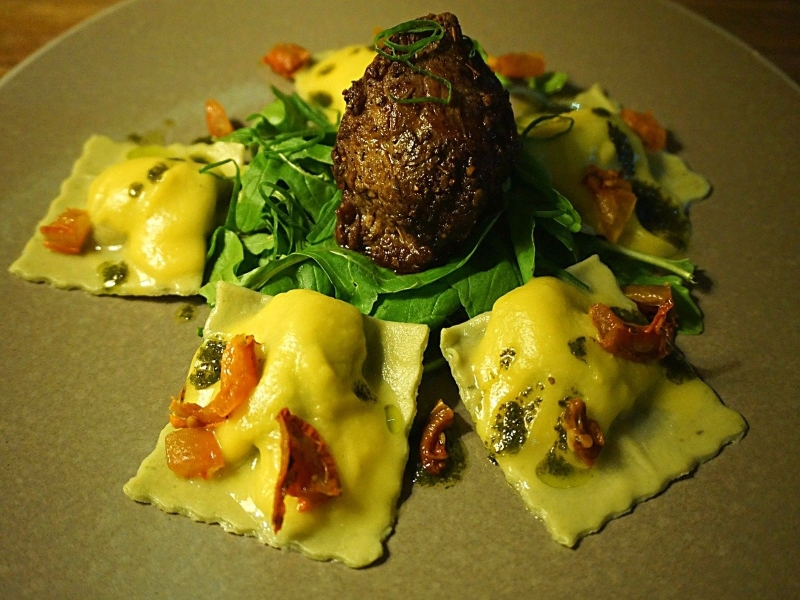
3. Ravioli Pasta
Ravioli is square shaped and stuffed pasta. A filling is encased in a thin layer of pasta dough to make ravioli, a type of pasta. Although ravioli from the grocery store is frequently on the smaller side, certain Italian restaurants could offer you huge ravioli. The margins are ruffled and closely compressed.
Though, ravioli can be square or circular and can be filled with cheese, meat, or other vegetables. The filling determines the appropriate sauce, but typical choices include conventional Sunday gravy and marinara.
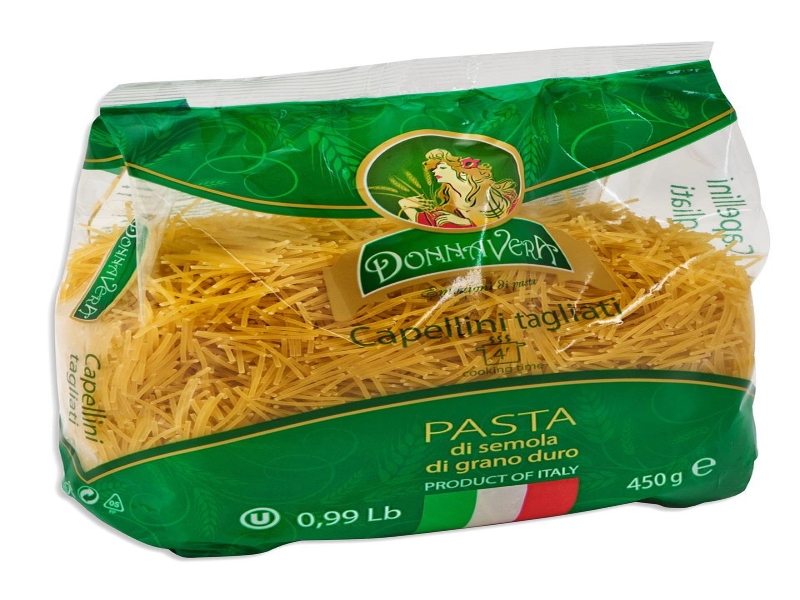
4. Vermicelli Pasta
Traditional round-sectioned pasta called vermicelli is similar to spaghetti in shape. Vermicelli is often thicker in Italy than it is in English-speaking nations where it is normally thinner.
Vermicelli may be used in stir-fries, soups, and pasta-like dishes by tossing it with canned tomatoes and olive oil.
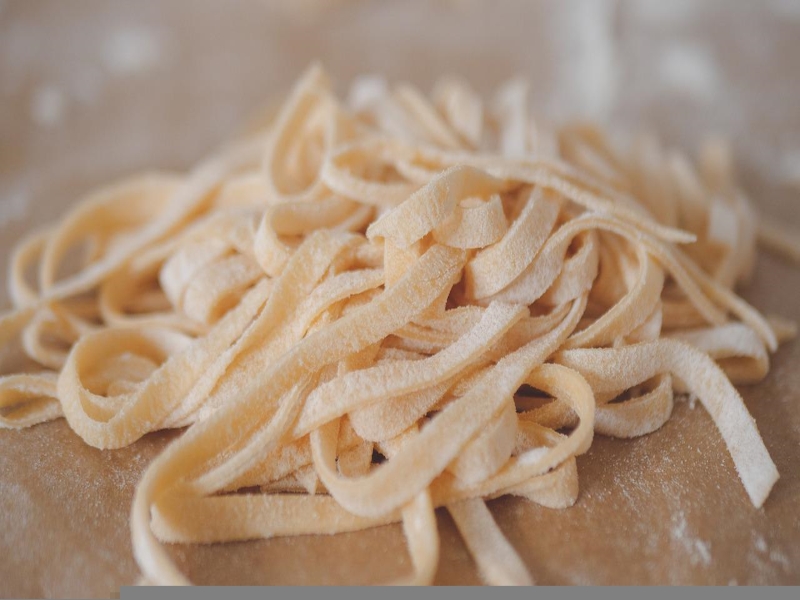
5. Fettuccine Pasta
Average cooking time for this type of pasta is 8-13 minutes.
Popular in Roman and Tuscan cuisine is the type of pasta known as fettuccine. Although it is a flat, thick pasta generally composed of egg and flour (often one egg for every 100 grams (3.5 oz) of flour), it is descended from the very thin capelli d’angelo of the Renaissance. It is comparable to, but broader and thicker than, the usual Bologna tagliatelle, which are more prevalent elsewhere in Italy and sometimes used as a synonym, at around 0.25 inches (6.4 mm). The long, and flat pasta is perfect for retaining the creamy sauce’s rich flavor while being twirled. Tagliatelle is a thicker, broader variation of fettuccine.
Basicallly, this is similar to a flat spaghetti noodle. The noodle is denser and thicker. In contrast to other kinds of long pasta, it is rather wide, thus it goes well with chunky meat sauces. Undoubtedly, fettuccine and creamy alfredo sauce make a delicious combination.

6. Tagliatelle Pasta
Average cooking for this type of pasta is Tagliatelle.
Tagliatelle are long, flat ribbons that resemble fettuccine in form. They are typically 6 mm wide.
While somewhat wider than fettuccine, tagliatelle is still much smaller than pappardelle. This ribbon-shaped pasta may be substituted for linguine or fettuccine in almost any dish.
Basically, traditional pasta dishes from Italy’s Emilia-Romagna and Marche regions include tagliatelle. Pasta produced from eggs is typically used to make tagliatelle. One egg is typically used for every 100 grams of flour.
The porous and rough texture makes it perfect for thick meat sauce, which are typically made with beef, veal, or pork, like bolognese sauce, and occasionally with rabbit. There are also a number of other less extravagant and more vegetarian options, such as briciole e noci (with breadcrumbs and nuts), uovo e formaggio (with eggs and cheese), or just pomodoro e basilico (with tomatoes and basil).

7. Cavatappi Pasta
Cavatappi is a thick, hollow pasta similar to macaroni that is manufactured without the use of eggs. Like other pastas, it could be yellow, but it also might be green or red if veggies or food coloring are included. Salads, soups, and casseroles are just a few of the meals it may be used in.
Typical tomato sauces matches for cavatappi include amatriciana or pomodoro.
Another name for this hollow, spiral-shaped noodle is double elbow pasta. In addition to the extended length and the numerous twists and turns, the sauce can coat a large surface area and be trapped inside the food. It does tastes fantastic in mac and cheese.
Cavatappi is an excellent option if you’re searching for a visually appealing corkscrew shaped pasta. The curly-shaped noodle is frequently ridged, which helps it keep sauce nicely.
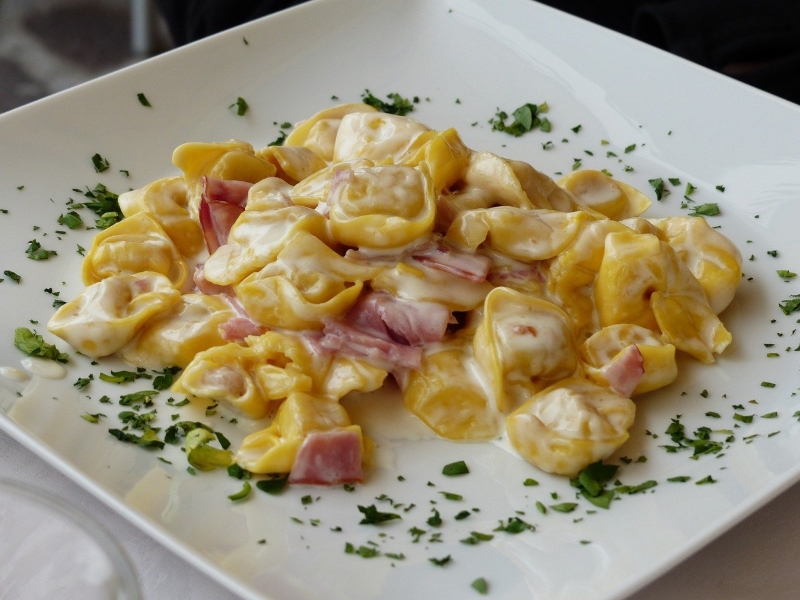
8. Tortellini Pasta
A type of pasta called tortellini comes from the Emilia area of Italy in particular Bologna and Modena. The filled pasta are often served in capon soup and packed with a mixture of meat (pork loin, uncooked prosciutto, mortadella), parmesan cheese, egg, and nutmeg.
The pasta shape is smaller, thicker, and ring-shaped than ravioli, they’re easier to pick up with fork, making them simpler to take up in one bite, and they’re a preferred ingredient for cream sauces and pasta salads.
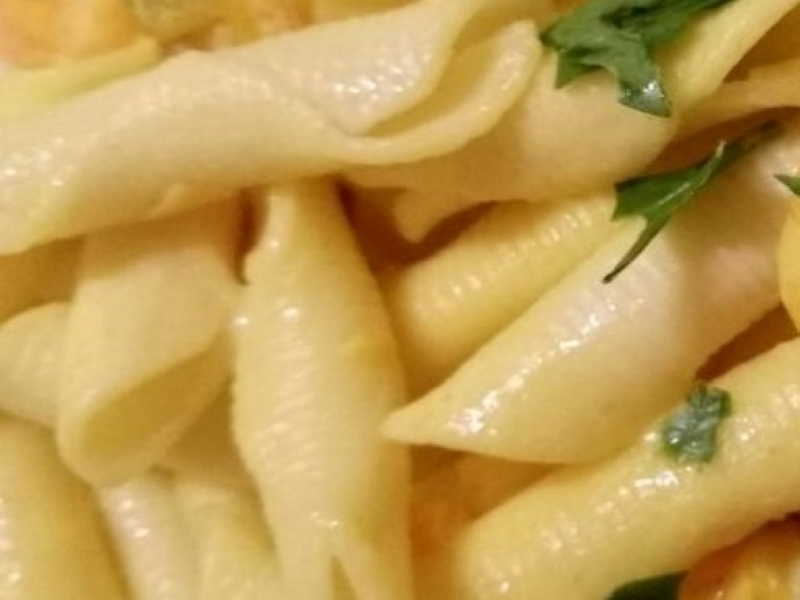
9. Garganelli Pasta
The average cooking time for this type of pasta is 8-10 minutes.
A flat, square noodle is rolled into a cylindrical shape to create garganelli. Handmade egg pasta dough is used to make the little squares that make up garganelli.
While garganelli and penne are quite identical, garganelli differs from penne in that a “flap” may be seen when one corner of the pasta square clings to the remainder as opposed to a smooth cylinder.
A typical duck ragù is a popular accompaniment and a delicacy of the cuisine of Bologna, Italy. Garganelli can be prepared in a variety of ways.
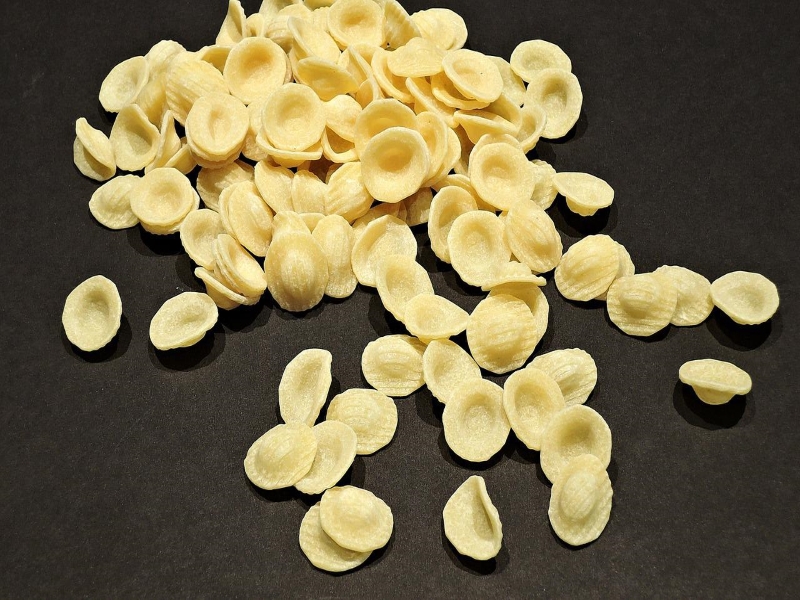
10. Orecchiette Pasta
A type of pasta called orecchiette is distinctive of the Southern Italian region of Apulia. Their resemblance to little ears gives them their name.
An orecchietta has a tiny dome-like form, a rough surface, and a center that is thinner than its edge. Orecchiette are produced from durum wheat and water, much as other types of pasta. Rarely are eggs utilized. The dough is flattened out and then cut into cubes for typical Southern Italian home cuisine. A knife is used to push each cube, moving it across the board and causing it to curl (making a cavatello). The form is then placed upside-down over the thumb.
Similar to cavatappi, it is commonly served with seafood pasta dishes, broccoli rabe, sausage, and olive oil.

11. Penne Pasta
A type of pasta called penne, is extruded and has sections that are cylinder-shaped with angled ends. The term “pen” is connected with the Latin word “penna,” which means “feather” or “quill.” Penne is the plural form of penna, which has both the meaning of “feather” and “pen” in Italian. The steel nibs of the then-common fountain pen were the inspiration for the design of this format.
Penne is basically ribbed, like rigatoni, but thinner and has angled ends. Due to its ridges and tubular shape, it goes well with nearly any kind of sauce, but the most well-known match is the traditional Italian pasta dish, penne alla vodka.
The shape of penne makes it ideal for a variety of sauces, including pesto, marinara, and arrabbiata. Penne is usually delicious with meatballs.

12. Orzo Pasta
Orzo is a type of pasta that resembles a big grain of rice. Although whole grain can also be used to make orzo, flour is often used to make it. Semolina, a kind of flour manufactured from durum wheat, is frequently used to make it.
You may prepare orzo in a way that resembles risotto. It is also frequently included as a side dish with soup, a component of a salad, or baked in a casserole.
Saffron, chillies, and black beans can be added to orzo to produce yellow, orange, or black pasta.
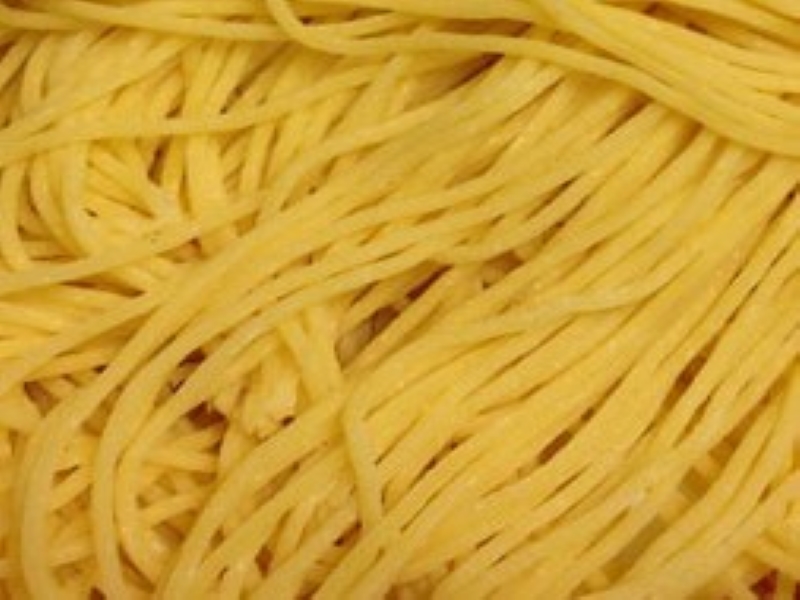
13. Angel Hair Pasta/ Capellini
An extremely thin type of Italian pasta known as capellini or angel hair pasta has a diameter between 0.85 and 0.92 millimeters (0.033 and 0.036 in). It has a rod-like shape and is made of lengthy strands, much like spaghetti.
Angel hair pasta goes nicely with light creamy sauces made of oil and cream. For an authentic Italian supper, try serving it with a typical handmade marinara sauce. Both shredded chicken or shrimp scampi provide excellent protein additions.
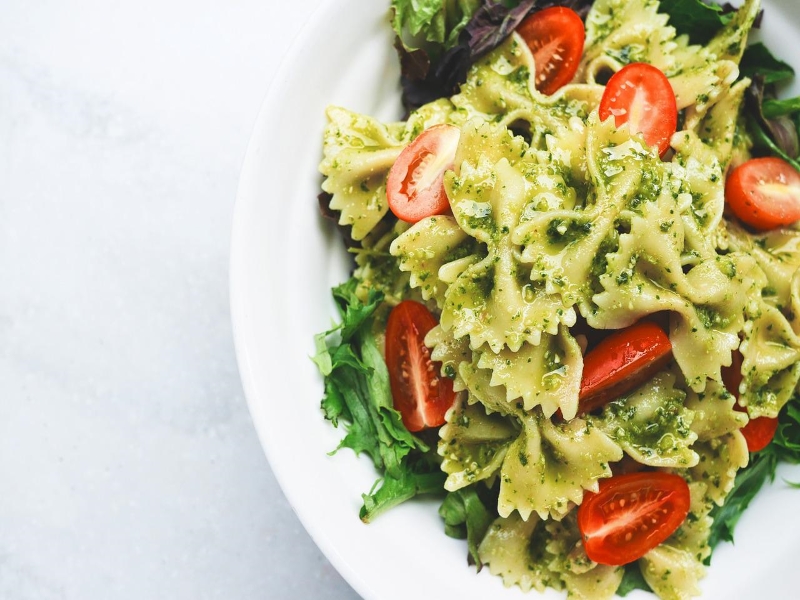
14. Farfalle/ Bow Tie Pasta
Tomato or cream-based sauces go well with farfalle pasta. It may be found in pasta salads and all varieties of creamy pasta.
There are several sizes of farfalle, but they all have a recognizable “bow tie” form. Usually, a rectangle or oval of pasta is used to produce farfalle; two of the sides are then cut to have ruffled edges, and the middle is then compressed to give the pasta its unique shape.
Colors are added to the dough by combining certain ingredients, which also changes the flavor. Beetroot may be used for red, spinach for green, and cuttlefish ink for black, for instance.
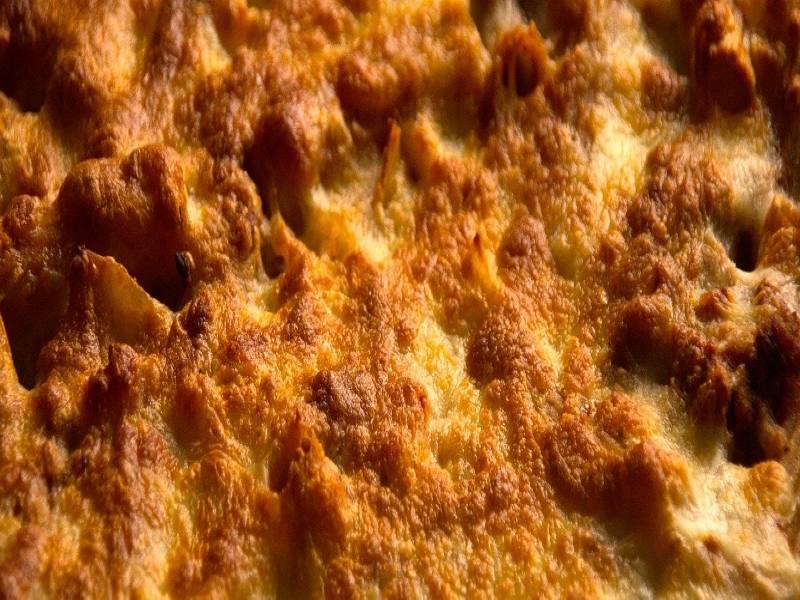
15. Ziti
Ziti is an Italian extruded pasta that hails from Campania. It is formed into a 25 cm long, wide tube shape that must be manually broken into smaller pieces before cooking. Ziti is considerably thicker than bucatini yet has certain similarities.
Italian restaurants frequently serve baked ziti, making it a casserole-friendly meal. Others enjoy it when it’s mixed with some tomato sauce or olive oil for a quick pasta dinner.
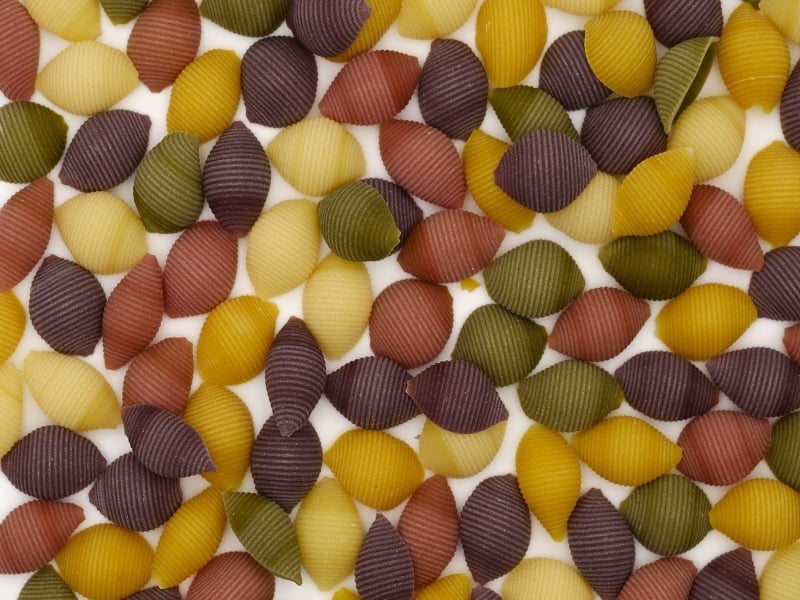
16. Conchiglie Pasta/ Shell Pasta/ Seashell Pasta
Conchiglie is often offered in two varieties: plain durum wheat and colorful versions made with natural colors like tomato extract, squid ink, or spinach extract. The pasta’s shell shape makes it easy for the sauce to stick to it. Conchigliette, a small version, is also offered.
They come in a range of sizes, including micro, small, medium, and jumbo. Naturally, their standout feature is homemade macaroni, but their open cores are excellent for encasing any kind of cream sauce or rich meaty sauces.
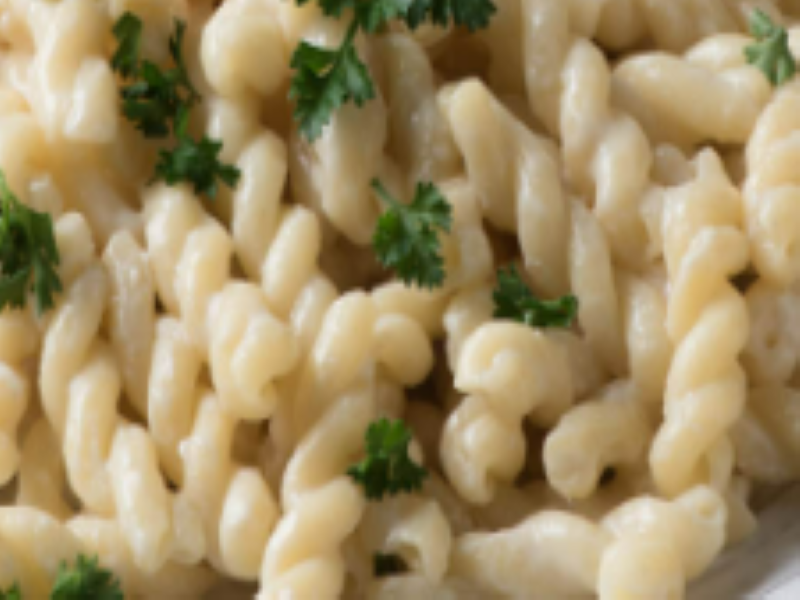
17. Gemelli Pasta
Gemelli is an Italian word for “twins”, thus the name. The most popular uses for it are to make casseroles and pasta salads.
Contrary to appearances, gemelli are not two tubes twisted around one another but rather a single strand in the shape of “s” that has been spiraled. Similar to fusilli, the strips are adhered together to create a single piece of dough.
Generally speaking, Gemelli pasta noodles is made of two thin ropes that have been twisted together. It’s only one noodle bent in that direction. This spiral pasta is a popular choice of noodle for adding leafy greens and herbs to spaghetti and pasta salad since it absorbs sauce effectively.
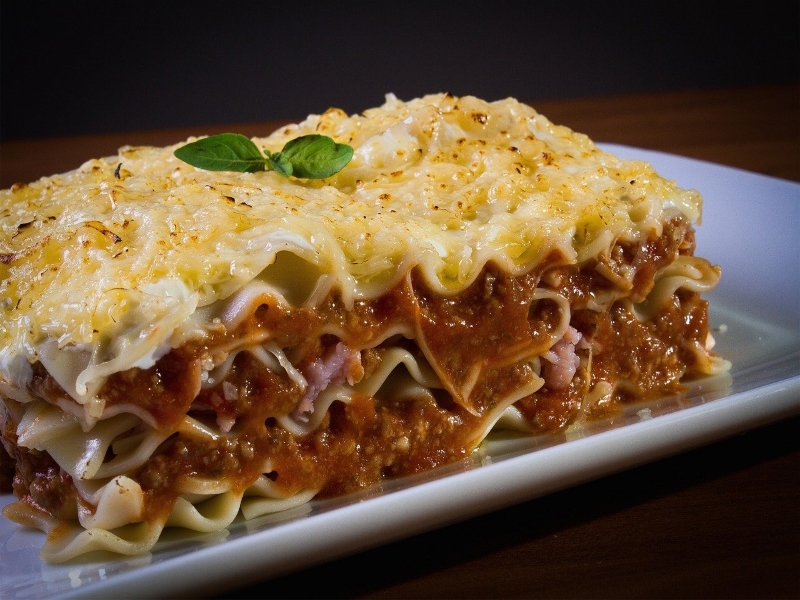
18. Lasagne
One of the earliest types of pasta is lasagna, which is formed of very wide, flat sheet pasta. Either term can also refer to an Italian dish that consists of stacked layers of lasagne alternated with fillings like ragù (ground meats and tomato sauce), vegetables, cheeses (which may include ricotta cheese, mozzarella cheese, and parmesan cheese, and seasonings and spices, like Italian seasoning, such as garlic, oregano, and basil, and the dish may be topped with grated cheese, which melts after baking. Usually, the prepared ingredients, including the prepared pasta, are baked in the oven. The finished baked pasta is divided into square serving sizes.

19. Bucatini
Bucatini, sometimes called perciatelli, are a type of thick pasta that resembles spaghetti and has a hole running through the middle of it. They are abundant throughout Lazio, especially around Rome.
Bucatini is a tubed pasta prepared from water and hard durum wheat flour. Nine minutes is the typical cooking time of this type of pasta.
In Italian cooking, bucatini is typically served with buttery sauces, vegetables, cheese, eggs, pancetta or guanciale, and anchovies or sardines. The Amatriciana sauce, also known as bucatini all’amatriciana, is one of the most often served sauces with bucatini. Guanciale, a form of cured meat derived from the pork jowl, is typically used to make it.
Did you know that you may make a biodegradable drinking straw out of uncooked bucatini? That’s right. It can also be used as a straw because of the hole at the center.

20. Spaghetti
Spaghetti is a popular type of pasta, it is long, thin, cylindrical, and firm. It is a component of every classic Italian meal. Spaghetti is manufactured from milled wheat, water, and occasionally other vitamins and minerals, just as other types of pasta. Durum wheat semolina is often used to make spaghetti in Italy. Although whole wheat flour can be used, pasta is often made with refined flour, which makes it white. Capellini is a very thin kind of spaghetti, whereas spaghettoni is a thicker variation.
Spaghetti is usually served with tomato sauce, meat or meatballs, and vegetables.
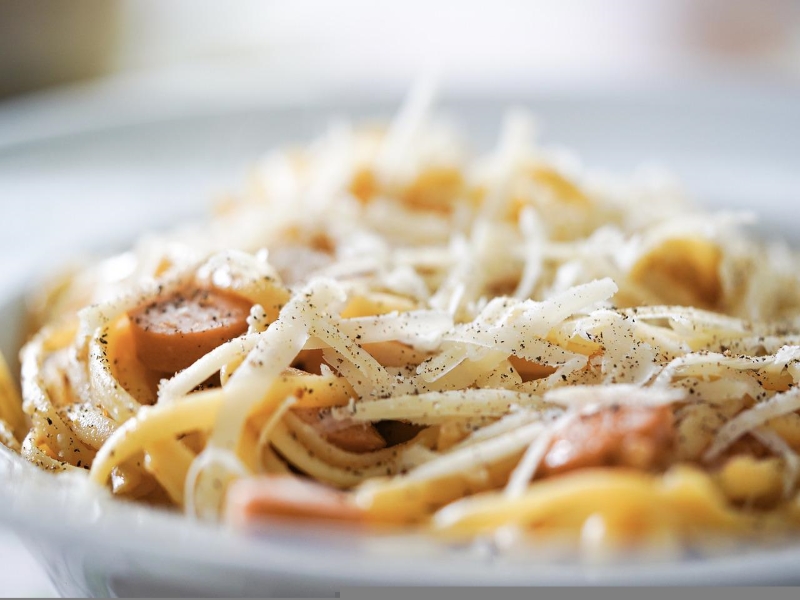
21. Linguine
Similar to spaghetti, but a little bit wider and flat.
This type of pasta is typically served with sauces like pesto. It’s also a typical noodle accompaniment for seafood meals, combined with white wine sauces, clams, and mussels. With linguine noodles, any white wine or cream-based sauce is a culinary delight.
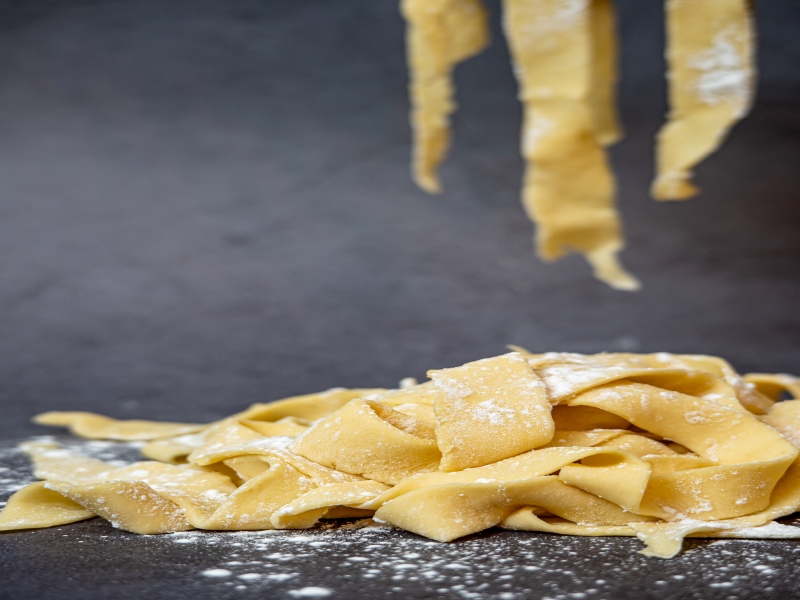
22. Pappardelle
Pappardelle is an extremely broad, flat pasta that originated from the Tuscany region.
Pappardelle pairs superbly with a meaty lamb ragù or a creamy mushroom sauce. With rich, meat-based sauces, pappardelle pasta noodles work even better. For instance, it’s excellent in seafood pasta recipes, despite being most frequently used in ragu or bolognese. Any hearty sauces may be thrown at it since it is huge, strong, and solid.
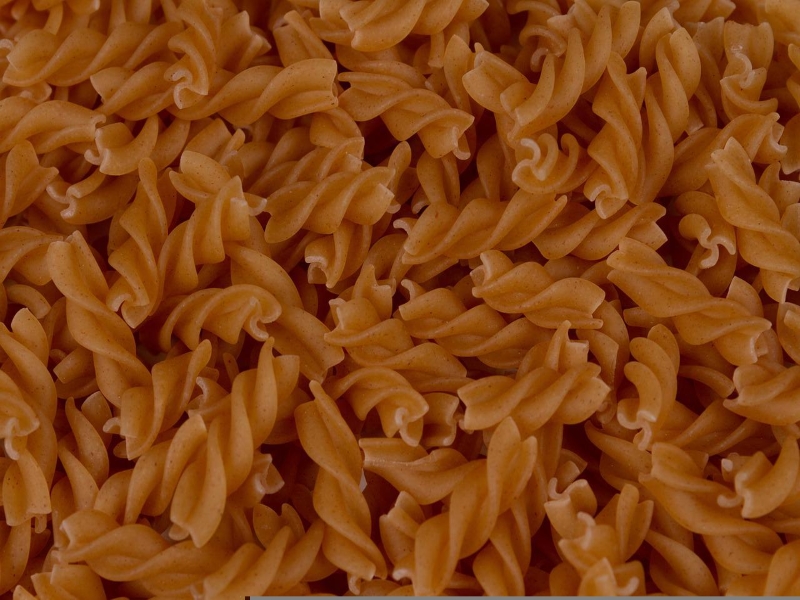
23. Fusilli
The type of pasta that is cut into a corkscrew or helical shape is called fusilli.
There are several grooves and crevices in this spiral-shaped noodle that may absorb excess sauce and dressing. It is strong enough to be used with meat sauces or other heavier sauces. However, pasta salads frequently incorporate it as well.
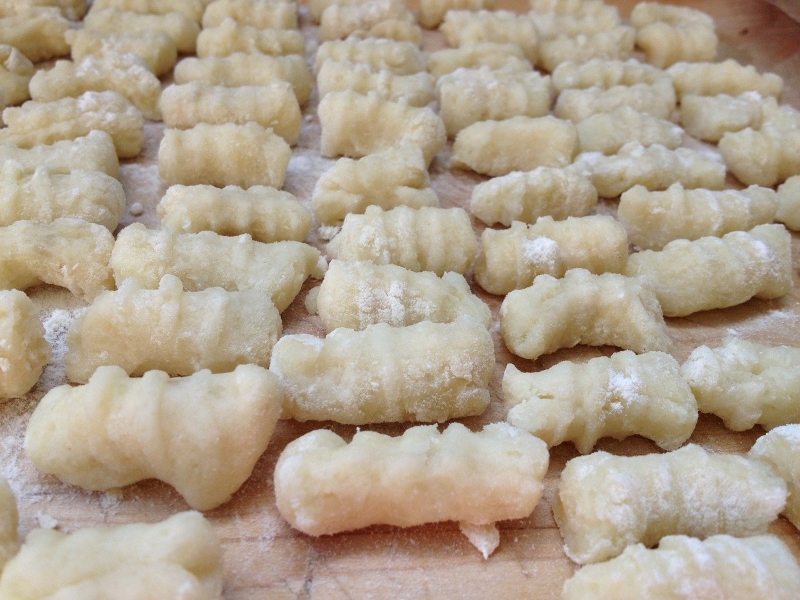
24. Gnocchi
Unlike hand-rolled pasta and extruded pasta, gnocchi is made with potatoes as the main component and flour and eggs as the finishing touches. The form is compact and tiny, like a dumpling. It is somewhat heavier and goes well with practically every sauce you can think of.
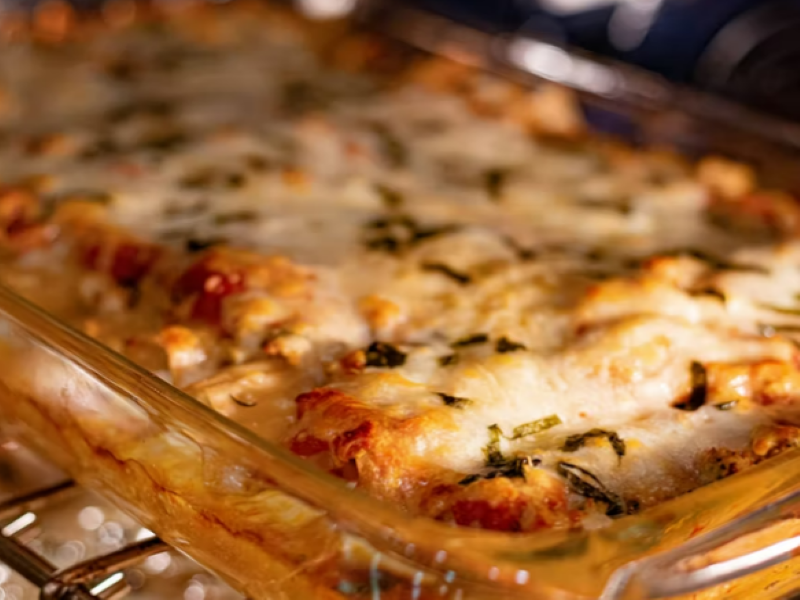
25. Manicotti
Manicotti are frequently utilized in a similar manner as cannelloni tubes. So, after stuffing with a delectable filling, bake it with Béchamel sauce on top.
Generally speaking, this is quite similar to lasagna, manicotti is frequently stuffed with cheese, covered in sauce, then baked to complete. But rather than being stacked, it’s meant to be rolled up and filled.

